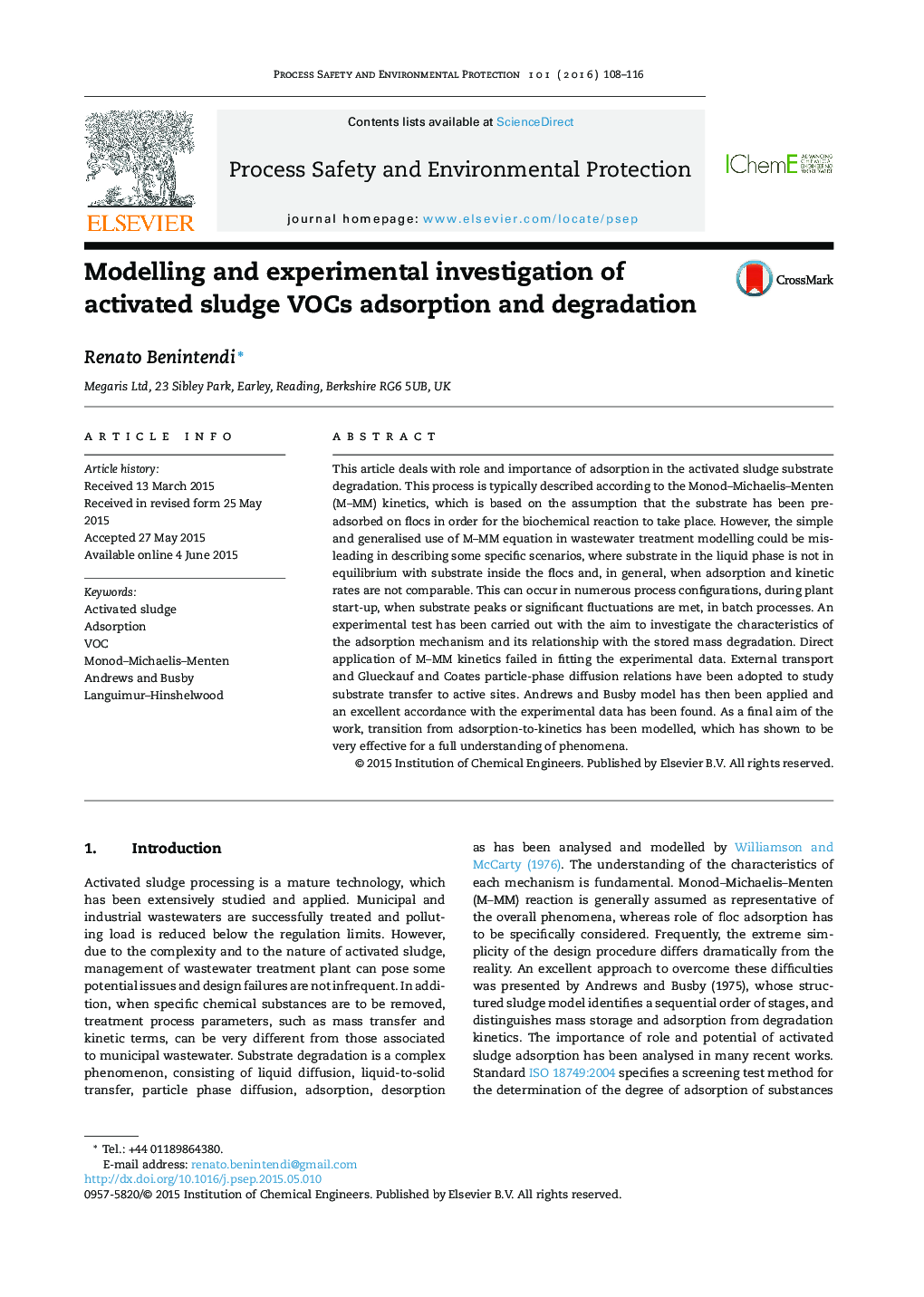| Article ID | Journal | Published Year | Pages | File Type |
|---|---|---|---|---|
| 588148 | Process Safety and Environmental Protection | 2016 | 9 Pages |
•Mass transfer and particle adsorption have been studied separately from the kinetics.•A batch experimental test has provided very clear findings about adsorption and kinetics.•Michaelis–Menten equation represents substrate degradation only at equilibrium.•Removal/degradation modelling has shown a good accordance with experimental data.
This article deals with role and importance of adsorption in the activated sludge substrate degradation. This process is typically described according to the Monod–Michaelis–Menten (M–MM) kinetics, which is based on the assumption that the substrate has been pre-adsorbed on flocs in order for the biochemical reaction to take place. However, the simple and generalised use of M–MM equation in wastewater treatment modelling could be misleading in describing some specific scenarios, where substrate in the liquid phase is not in equilibrium with substrate inside the flocs and, in general, when adsorption and kinetic rates are not comparable. This can occur in numerous process configurations, during plant start-up, when substrate peaks or significant fluctuations are met, in batch processes. An experimental test has been carried out with the aim to investigate the characteristics of the adsorption mechanism and its relationship with the stored mass degradation. Direct application of M–MM kinetics failed in fitting the experimental data. External transport and Glueckauf and Coates particle-phase diffusion relations have been adopted to study substrate transfer to active sites. Andrews and Busby model has then been applied and an excellent accordance with the experimental data has been found. As a final aim of the work, transition from adsorption-to-kinetics has been modelled, which has shown to be very effective for a full understanding of phenomena.
